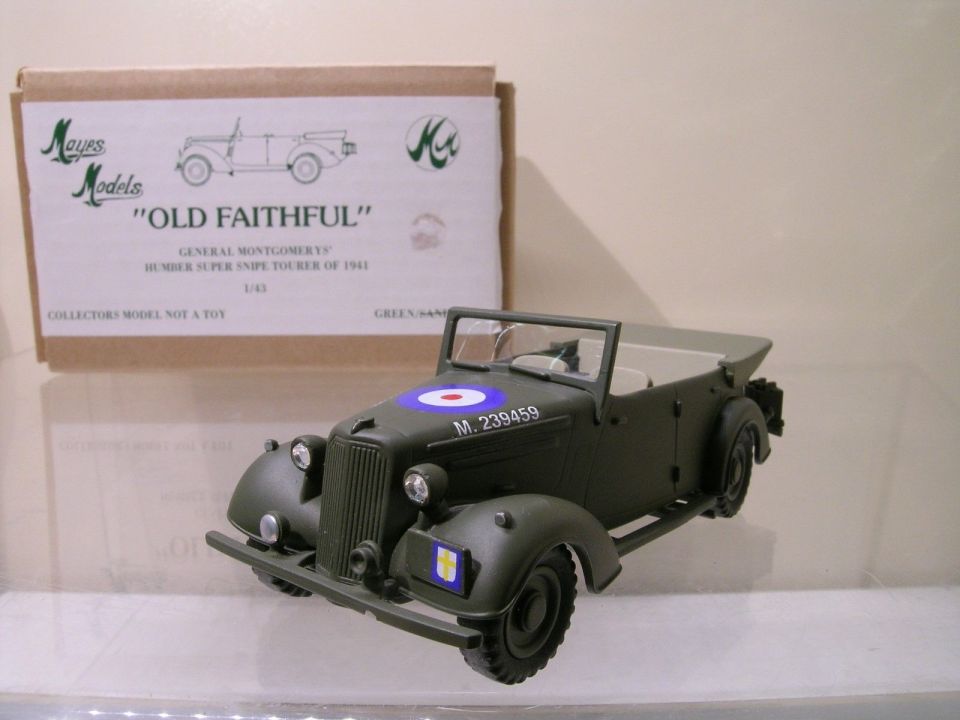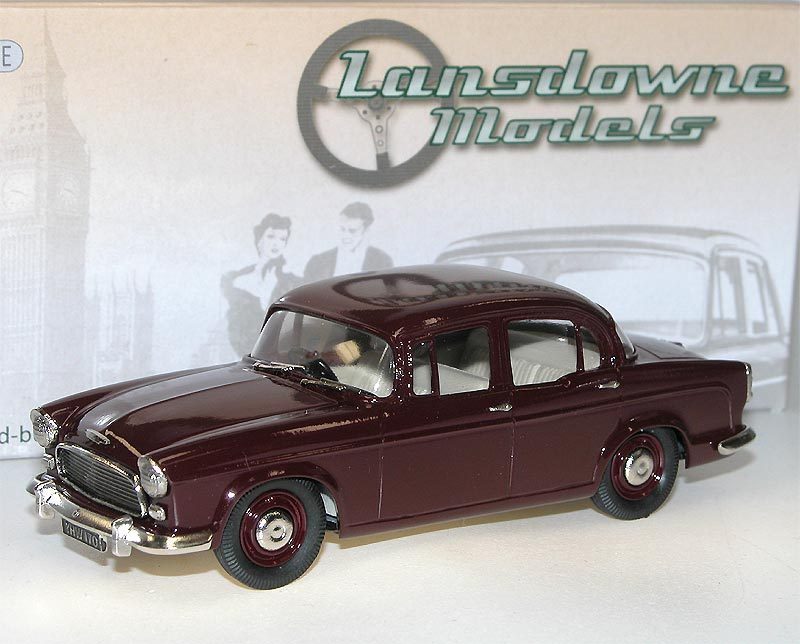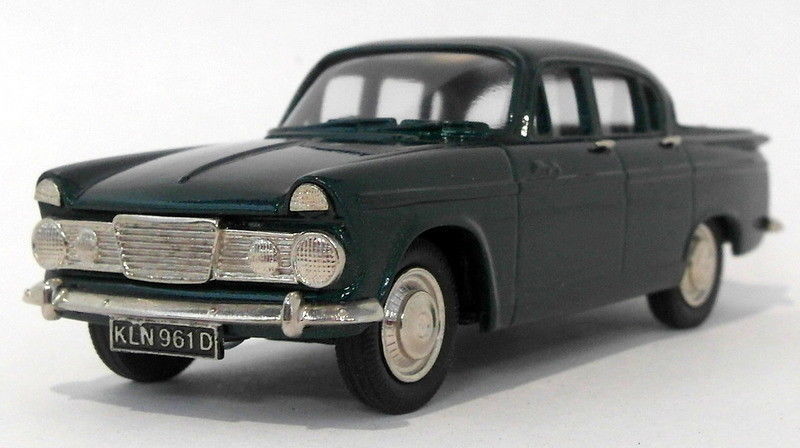Humber Limited was a British manufacturer of bicycles, motorcycles and motor vehicles incorporated and listed on the stock exchange in 1887. It took the name Humber & Co Limited because of the high reputation of the products of one of the constituent businesses that had belonged to Thomas Humber. A financial reconstruction in 1899 transferred its business to Humber Limited.
From an interest in motor vehicles beginning in 1896, the motor division became much more important than the cycle division and the cycle trade marks were sold to Raleigh in 1932. The motorcycles were withdrawn from sale during the depression of the 1930s.
Humber is now a dormant marque for automobiles as well as cycles. Following their involvement in Humber through Hillman in 1928 the Rootes brothers[1] acquired 60 per cent of Humber’s ordinary capital, sufficient for a controlling interest. The two Rootes brothers joined the Humber board in 1932 and began to make Humber the holding company for vehicle manufacturing members of what became their Rootes Group.
By 1960 annual production was around 200,000 vehicles. Previous insistence on Rootes family control, however, may have led to under-capitalisation of the business. Building a brand new car, the Hillman Imp, proved beyond Humber and Rootes Group resources and their businesses were bought by the Chrysler Corporation in 1967.
History
1919–1939
There were postwar slumps in the early 1920s and in addition the public were moving from pedal cycles to motorcycles as well as to cars. Rover, Singer, Swift, Triumph and Riley all gave up their manufacture of cycles.
Humber acquisitions
In 1925 Humber moved into the production of commercial vehicles with the purchase of Commer.[11]
In the year to 1928 Humber’s chairman was obliged to report a loss for the second year running. Commer Cars’ turnover was substantially increased but Commer did not return to profit. The bicycle business improved but motorcycles did not. Humber cars, the product being as the chairman put it of a distinctive class, were more influenced by conditions than were mass-produced vehicles. Humber he described as one of the oldest and best known higher grade cars.
Before Rootes
The chairman, Stanley Brotherhood, told a special meeting of shareholders of the exceedingly good performance of one of the 14-40 cars driven by J W Fitzwilliam and his brother who had just returned from traversing 4,500 miles in central Europe including the worst roads in the Balkans. He then reported the “drastic redesign” of Humber’s cars which together with improved appearance and performance and revised prices were expected to improve the products’ performance in the marketplace.[12]
Mention of the drastic redesign at that special meeting was followed by another meeting to discuss the amalgamation of Humber and its partly-owned subsidiary Hillman Motor Car Company. Hillman, the chairman explained, made one of the most popular medium priced cars and would provide a suitable partner to the distinctive Humber products. Shareholders were unanimous that the amalgamation should go ahead on the proposed terms.[12]
In 1929 Hillman, under the control of the Rootes brothers, was amalgamated with Humber—the combine was not under the control of the Rootes brothers—but William Rootes’ marketing skills had been immediately brought into play when Rootes Limited had been appointed “World Exporters”. In December 1929 reviewing the 1929 year the chairman told shareholders Humber had now introduced three new models named: 16-50,[13] for the 1928 Motor Show, Snipe[14] and a seven-seater Pullman both for the October 1929 Motor Show. For the time being the 9-28 and 20-65 hp models would continue but at a reduced price.
Later Michael Sedgwick would describe the events of this era as “a levelling process comparable to the fate of Wolseley” (‘s 1920s cars). Out, he said, went uncertain braking, the i.o.e. engine and superbly finished coachwork, the new cars were pure Rootes with Bendix brakes, downdraught carburettors, “silent third” gearboxes with central gear lever and hydraulic shock absorbers. The 16 hp car could cope with the Humber Snipe bodywork only with a low final drive ratio. The other cars also became slightly bigger Hillmans with different engines and a longer wheelbase. A Humber Twelve was introduced that looked like a Hillman Minx with a painted spare wheel cover and hinged quarter lights. There was attractive work by independent coachbuilders on the Twelve chassis. The Vogue sports saloon may or may not have been designed by couturier Captain Molyneux. The Twelve’s engine was bored out to 75 mm and powered Hillman’s Fourteen and even Sunbeam-Talbot’s postwar 90. By the outbreak of war in 1939 the quite fast big-engined Super Snipe with hydraulic brakes was selling well and one model became the Army’s famous second world war staff car.
Rootes brothers and Prudential buy sixty per cent of Humber
Humber’s independence ended in 1931 when the Rootes brothers bought a majority shareholding with the financial support of Prudential Assurance. They provided their Hillman shares as part payment.
1939–1945
The Ryton on Dunsmore plant which closed at the end of 2006 had originated in 1939 as one of the so-called shadow factories: the Ryton plant was originally built to produce aero engines. At Speke, Liverpool, another shadow factory opened in April 1939 assembled bombers. Armoured cars, scout cars and staff cars were made in the existing factories along with much other war material. General Montgomery, Commander of the British and Allied forces in Northern Africa during the Desert war of WWII, had two specially built Humber Super Snipe four door open tourers made with larger front wings or guards, mine proof floors, special fittings and long range fuel tanks. Two cars were built for him and used in the Africa campaign against General Rommel, who used open tourer large, long range Mercedes Benz’s. Montgomery’s Humbers were known as ‘Old Faithful’ and the ‘Victory Car’. Both cars still exist in museums in England and are a testament to the high engineering and manufacturing standards of Humber and Rootes Ltd. The victory car drove Montgomery and Churchill through the streets of London during the VE parades at the end of WWII.
Annual vehicle production
1929-30— 9,000 vehicles
1933-34—20,000
1937-39—41,000
1946-47—42,000
1949-50—90,000
1945–1967
In the postwar era, Humber’s mainstay products included the four-cylinder Hawk and six-cylinder Super Snipe. Being a choice of businessmen and officialdom alike, Humbers gained a reputation for well appointed interiors and solid quality. The Hawk and the Super Snipe went through various designs, though all had a “transatlantic” influence.
-
- Annual output, 200,000 vehicles
In 1960 Rootes was the world’s twelfth largest motor corporation by volume, its annual output nearly 200,000 cars, vans and trucks. They employed some 20,000 people. The group had six million square feet (557,000m2) of manufacturing space and owned nine assembly plants outside Britain. They were involved in car hire, hire purchase and driving schools and even made air conditioners. There were about one thousand dealers in the UK. The two Rootes brothers remained in control of their group from their adjoining suites of offices in Devonshire House, Piccadilly.[20] The ground floor Rootes showroom on Piccadilly is now an Audi showroom.
-
- Imp and Chrysler
The success of BMC‘s Mini made Rootes speed the development of their own small car. A new assembly plant was planned but government was obliging major employers to build new plants where there was surplus labour. Jaguar solved their expansion problem by buying Daimler and its Coventry plant with experienced workforce but Rootes selected a greenfield site by Pressed Steel body works near Glasgow airport in Scotland, at Linwood near Paisley.[20]
The new factory was officially opened in May 1963 and the new rear-engined Hillman Imp went on sale the next day but there were difficulties with industrial relations and, soon, the Imp’s reliability. The Imp’s heavy development expenses and slackening sales to USA brought about losses for the Rootes group in both 1962 and 1963.[20]
In February 1964 the owners of the minority holdings in Humber Limited (and Tilling-Stevens and Singer Motors) sold their holdings to Rootes Motors Limited taking in exchange shares in Rootes Motors. Humber and its two subsidiaries now became wholly owned subsidiaries of Rootes Motors Limited.[22]
A last major activity of, by then, Lord Rootes, was to open sale negotiations with Chrysler Corporation. He died in December 1964. Chrysler took control in 1967.[20]
1967–1976
The last of the traditional large Humbers, the series VA Super Snipe (fitted with twin Stromberg CD 100 Carburettors) were sold in 1968, when Chrysler ended production. Several V8 models had been in pre-production at this time, but were never publicly sold. Several of these test examples survive today.
Humber’s and Rootes’ last new car was the second generation of Humber Sceptre, a variant of their Rootes Arrow model. The marque was shelved in 1976 when all Hillmans became badged Chryslers.
The Hillman Hunter (another Arrow model) badged Chrysler until production ceased in 1979 when Chrysler’s European divisionwas sold to Peugeot and the marque renamed Talbot. The Talbot marque was abandoned at the end of 1986 on passenger cars, although it was continued on vans for six years afterwards.
Main models
Humber 8 1902
Humber 12 1902
Humber 20 1903
Humberette Voiturette 1903-1911
Humber 8/10 1905
Humber 10/12 1905–1907
Humber 30/40 1908–1909
Humberette Cycle Car 1912-1915
Humber 11 1912
1919-1939
Humber 10 1919–1921
Humber 15.9 1919–1925
Humber 11.4 and 12/25 1921–1925
Humber 8/18 1922–1925
Humber 15/40 1924–1928
Humber 9/20 and 9/28 1925–1930
Humber 14/40 1926–1929
Humber 20/55 and 20/65 1926–1929
Rootes Brothers
Humber 16/50 1928–1932
Humber Snipe 1929–1947+
Humber Pullman 1930–1954+
Humber 16–60 1933–1935
Humber 12 1933–1937
Humber 16 1936–1940
Humber Imperial 1938–1967+
Humber Super Snipe 1938–1967+
1945-1967
Humber Snipe 1929–1947
Humber Pullman 1930–1954
Humber Super Snipe 1938–1967
Humber Imperial 1938–1967
Humber Hawk 1945–1967
Humber Sceptre 1961–1967,1967–1976
Humber Vogue 1963–1966 (Australia).
Surviving cars
There is a thriving club, and many of these upmarket cars survive today from before the 1930s.
The world’s largest collection of the Rootes brothers’ Humber cars (built after 1930) can be viewed at the Marshalls Post-Vintage Humber Car Museum in Hull. It includes 21 Humber cars dating from 1932 to 1970 on permanent display, plus 24 unrestored cars.
MODEL CAR

Boxed Mayes Models – Monty’s ( Mongomery) Victory Car – Humber Snipe

OXFORD-MODELS – HUMBER – PULLMAN LIMOUSINE 1950

BROOKLIN-MODELS – HUMBER – SUPER SNIPE MORFLOCK HQ POLICE 1950

OXFORD-MODELS – HUMBER – PULLMAN LIMOUSINE ROTHCHILD 1950

OXFORD-MODELS – HUMBER – PULLMAN LIMOUSINE KING GEORGE VI 1950

Sun Motor Co. – Humber Super Snipe 1950

Lansdowne Models – Humber Super Snipe Tickford Convertible 1950

Lansdowne Models – Humber Hawk Mk1 Saloon 1957

Lansdowne Models – Humber Super Snipe Est 1961

NEO SCALE MODELS – HUMBER – SCEPTRE MKI 1964

Lansdowne Models – 1965 Humber Sceptre Mk II

NEO SCALE MODELS – HUMBER – SUPER SNIPE SEDAN 1965

SILAS – HUMBER – SCEPTRE MKIII 1976
MILITARY VEHICLE

EDICOLA – HUMBER – TANK MK.IV 8th INFANTRY DIVISION INDIA SANGRO RIVER ITALY 1943
